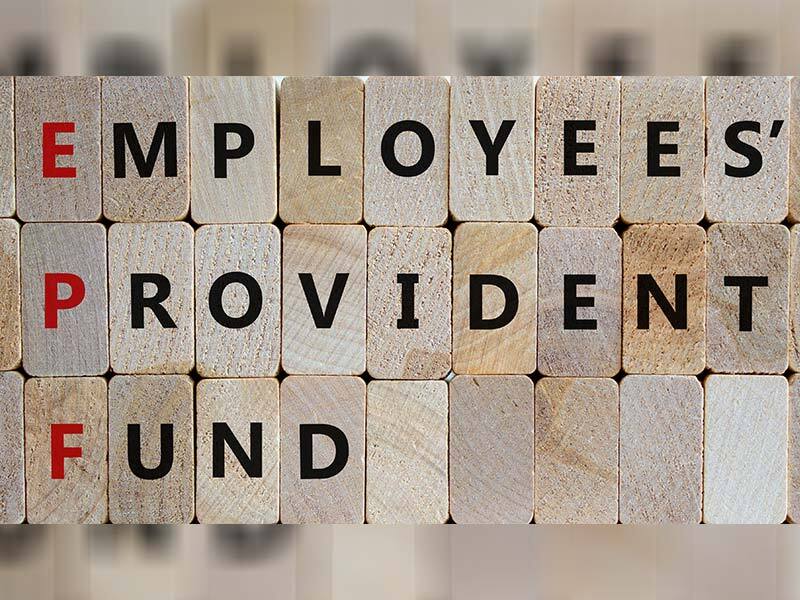
In order to promote the habit of saving and sound financial planning, the Government of India initiated the Employees’ Provident Fund scheme. All provident fund accounts are maintained by the Employees’ Provident Fund Organisation (EPFO), a statutory organization, and a 12 digit Universal Account Number (UAN) is allotted to each of the employees. Wish to know more about this? Read on!
What is an Employee Provident Fund?
Under this social security scheme, the employee has to contribute a certain amount, and the employer will contribute the same amount. The employee’s contribution accounts for 12% of his or her salary and so does the employer’s contribution. But the contribution that the employer makes would be divided into 3.67% that would go towards EPF, 8.33% towards Employee Pension Scheme (EPS), 0.50% towards Employees Deposit Link Insurance Scheme (EDLIS), 1.10% towards EPF administrative charges, and 0.01% towards to EDLIS administrative charges. The beneficiary will get the entire principal with interest at the time of retirement.
The rationale behind this service is to encourage the employees to save a part of their monthly salary toward their retirement corpus. It also helps the individual to enjoy the benefits of a tax free instrument (it is an EEE instrument) and is eligible for deductions under Section 80C.
Eligibility for EPF
EPF accounts can be held by both public and private employees. It is mandatory for employees that earn less than Rs. 15,000 and for those who earn more than Rs. 15,000, the employees have to take permission from the Assistant PF Commissioner and their employer to open an EPF account. This is because they are categorised as ineligible for the EPF.
What are the benefits associated with EPF?
Having an EPF account can be quite beneficial. This is because it can help with:
- Creating a corpus for your retirement. Remember that 8.33% of the contribution that employees make towards the EPF goes straight into the pension fund. Over time, this sum can be quite substantial.
- Generating capital by virtue of the interest garnered over time.
- Enjoying tax exemptions (up to 1.5 Lakhs)
- Creating an emergency fund to combat any unfortunate incident.
Also, one can get higher capital gains, access life insurance aids and provide higher credit returns.
EPF Services
The services associated with this EPF account are all accessible online ranging from transfer to withdrawal to even checking one’s account statement. The employee, with each job transfer, can have his or her funds transferred automatically from one employer to another.
Fund transfers online have become a lot easier with the integration of EPFO into the National Payments Corporation of India payment platform as the transfers are immediate (it gets completed on the same day) and is very convenient.
EPF Interest Rate
The interest rate offered by EPFO to employees is currently 7.1%, which is reset every quarter. It is important to note that the interest is calculated on a monthly basis based on the running balance of the employee and the same is credited into the employee account at the end of the financial year.
The quantum of EPF will be calculated based on the sum total of one’s basic income, dearness allowance, and retaining allowance.
How to apply for EPF?
The enrollment of an individual into the EPF scheme happens at the discretion of the employer. The process in fact, is completed by the employer itself. The organisation can only enroll the employee if it is a registered company under Schedule I of the EPF Act and has a strength of 20 people in total.
In case the individual is a business owner, then all eligibility criteria have to be met before enrolling in the scheme.
Note that apart from your proof of identity (Aadhaar card/ passport), PAN details, and proof of residence (house papers, electricity bills, etc), there are a few other EPF-related forms that you need to be aware of. These have been highlighted in the table below:
- Form 2 (which is used for nominating and declaring
- Form 5 (which is used to register new employees)
- Form 5 IF (this form can help you avail a claim under the EDLI scheme)
- Form 10D (you need to fill this form to avail your monthly pension)
- Form 11 (you need to fill this form if you want to transfer the EPF account.)
- Form 14 (you need to fill this if you’re planning on buying an LIC policy.)
- Form 15G (you need to fill this form to avail tax-saving benefits on interest)
- Form 19 (you must fill this to settle the EPF)
- Form 20 (a beneficiary must fill this to settle the EPF upon death)
- Form 31 (you have to fill this to withdraw your funds)
EPF Withdrawal
To understand how to withdraw your EPF, you need to first understand what the UAN is. The term UAN stands for Universal Account Number and is basically a 12-digit verification number linked with your EPF. Each time you change your job, your employer can link the new EPF with the existing account by using the UAN. You can generate the UAN online by visiting the website of the Employee Provident Fund Organisation (EPFO).
A member can apply for withdrawal from EPF by filling Forms 31, 19 and 10C. This can be done with the help of some basic details such as PAN, Aadhar number, UAN, etc. But EPF is not withdrawn while one is usually working. This rule is not devoid of exceptions. The exceptions are – marriage and education of one’s children, oneself, one’s sibling, or to repay or partly repay a home loan, alteration or repairs to an existing home, or for the construction of one’s house, or for the purchase of one’s house, or lastly, for the medical treatment of oneself or one’s family members. Also, an individual who hasn’t been in employment for a month can withdraw 75% of their EPF money.
Also please note that if the EPF amount is withdrawn before 5 years one will face two major drawbacks i.e. the amount will be taxed at the rate of 10% (provided the sum is greater than Rs. 50,000) and one will not receive the benefits under Section 80C of the Income Tax Act.
Conclusion
- When will updates in the PF account reflect in the passbook?
Any changes made on the portal or any updates to the account will reflect in the passbook only after a period of 6 hours.
- How can one know his or her EPF claim status online?
This can be done through three methods i.e. through the EPFO portal, through the UAN member portal and through the Umang application. But exempted establishment members, settled members, and inoperative members.
- What is an EPF Account?
It is a government bank account in which amounts are credited on a monthly basis in lieu of EPF. The balance can be checked with the help of the EPFO Sewa portal, an application and via SMS.
- How to make payments to the EPF account?
An EPF account holder can make either online (on the EPFO portal) or offline payments towards the EPF.
- What is the EPF e-Sewa portal?
It is a portal that enables an individual to carry out numerous tasks related to EPF online. These tasks include claiming the PF amount, checking the claim status, updating KYC details, transferring funds etc.
- In case the employee is paid on a daily basis, then how is the contribution calculated?
The contribution of the employer will be based on the entire wages paid in the calendar month.
- Can the salary of the employee be reduced by the employer on account of payment to the EPF?
No, such a practice is barred as per Section 12 of the EPF Act.





















